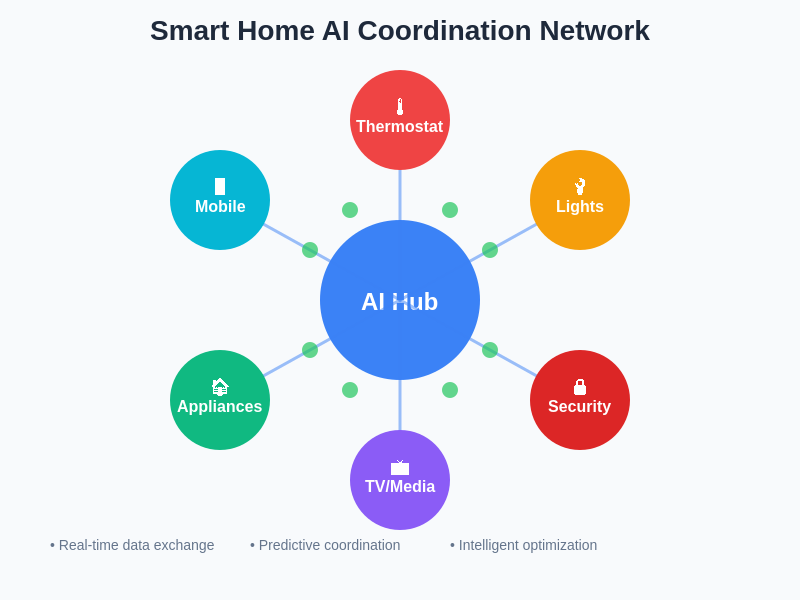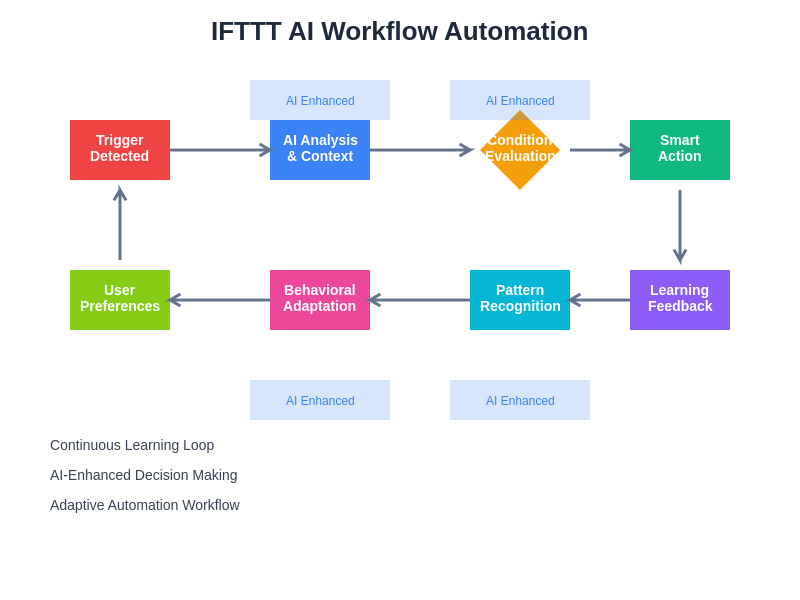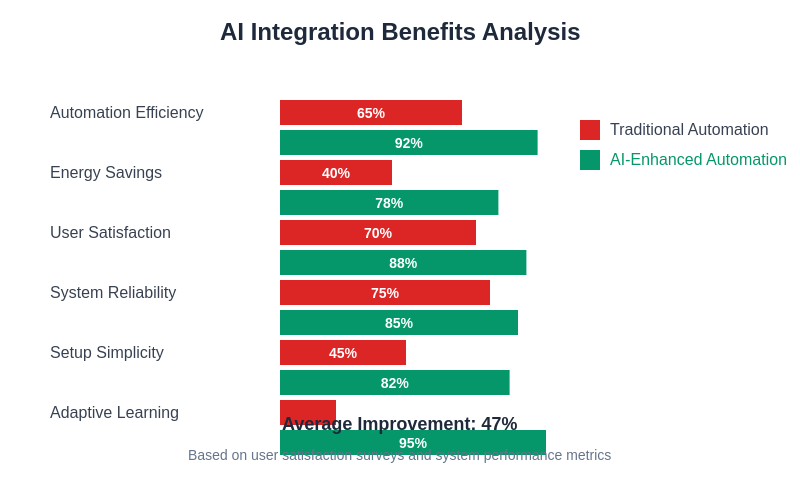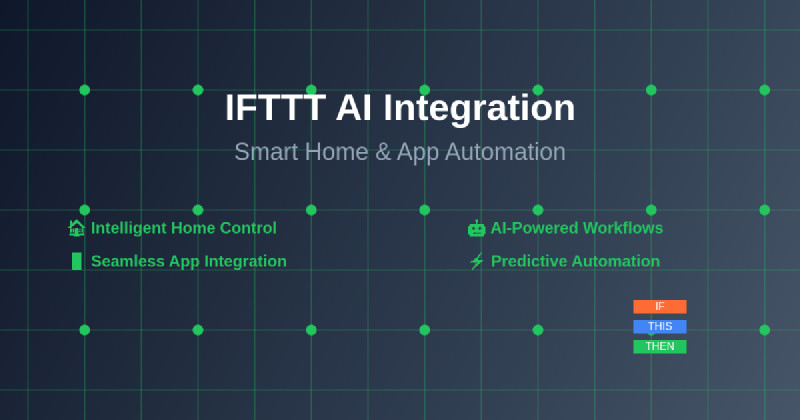The convergence of artificial intelligence with automation platforms has reached a pivotal moment in the evolution of smart home technology and application integration. IFTTT (If This Then That), once a simple trigger-based automation service, has transformed into a sophisticated AI-driven ecosystem that intelligently orchestrates countless devices, applications, and services to create seamless, adaptive experiences that anticipate user needs and respond dynamically to changing conditions and preferences.
Explore the latest AI automation trends to understand how artificial intelligence is revolutionizing the way we interact with our digital and physical environments. The integration of AI into automation platforms represents a fundamental shift from rigid, rule-based systems to intelligent, learning-capable networks that evolve and improve through continuous interaction and feedback.
The Evolution from Simple Triggers to Intelligent Automation
Traditional automation platforms relied on straightforward conditional logic where specific triggers would invariably produce predetermined responses. IFTTT’s AI integration has transcended these limitations by introducing machine learning algorithms that analyze patterns, predict user behavior, and make intelligent decisions about when, how, and why certain automations should execute. This evolution has transformed static automation rules into dynamic, context-aware systems that understand the nuances of human behavior and environmental factors.
The sophistication of modern AI-enhanced IFTTT workflows extends far beyond simple cause-and-effect relationships. These systems now incorporate temporal awareness, location sensitivity, device status monitoring, and even mood recognition to create automation experiences that feel natural and intuitive. Users no longer need to anticipate every possible scenario when creating automations; instead, the AI learns from usage patterns and automatically adjusts behaviors to optimize outcomes and user satisfaction.
Smart Home Ecosystem Intelligence
The smart home environment presents unique challenges that AI-enhanced IFTTT automation addresses with remarkable effectiveness. Traditional home automation often required users to manually configure complex scenes and schedules that frequently failed to account for the dynamic nature of daily life. AI integration has revolutionized this approach by creating adaptive automation systems that learn from occupancy patterns, seasonal changes, energy usage trends, and personal preferences to automatically optimize home environments without constant manual intervention.
Modern AI-driven smart home automation through IFTTT can intelligently coordinate heating and cooling systems with weather forecasts, occupancy sensors, and energy pricing to maintain optimal comfort while minimizing energy consumption. The system learns when residents typically arrive home, adjusts temperature settings accordingly, and even accounts for unusual schedule variations by monitoring smartphone location data and calendar entries to anticipate changes in routine.
Experience advanced AI capabilities with Claude to understand how intelligent automation can transform your smart home experience through sophisticated reasoning and adaptive learning. The synergy between AI processing power and automation platforms creates unprecedented opportunities for creating truly intelligent living environments that respond to human needs with remarkable precision and foresight.
Contextual App Integration and Workflow Optimization
Application integration represents another frontier where IFTTT’s AI capabilities demonstrate exceptional value in creating seamless digital experiences. Rather than relying on simple data transfers between applications, AI-enhanced integrations can analyze content, understand context, and make intelligent decisions about how information should be processed, routed, and presented across different platforms and services.
Consider the complexity of managing information flow between productivity applications, social media platforms, communication tools, and storage services. AI-powered IFTTT integrations can intelligently categorize incoming emails, automatically schedule meetings based on content analysis, generate summary reports from multiple data sources, and even compose appropriate responses based on communication patterns and relationship contexts. This level of sophistication transforms routine digital tasks into streamlined, intelligent processes that require minimal human oversight while maintaining high levels of accuracy and appropriateness.
Predictive Automation and Behavioral Learning
The true power of AI integration in IFTTT lies in its predictive capabilities and ability to learn from user behavior over time. Unlike traditional automation systems that execute the same responses to identical triggers, AI-enhanced systems analyze historical data, identify patterns, and predict future needs to proactively execute automations before users realize they need them.
This predictive approach manifests in various ways throughout smart home and app automation scenarios. The system might automatically adjust lighting schedules based on seasonal changes and historical preferences, preemptively order household supplies based on usage patterns and inventory levels, or suggest new automation workflows based on observed behaviors and similar user profiles. The learning aspect ensures that these predictions become increasingly accurate over time, creating automation experiences that feel almost telepathic in their responsiveness to user needs.
Multi-Device Coordination and Ecosystem Harmony
The proliferation of connected devices in modern homes and digital workflows creates coordination challenges that AI-enhanced IFTTT automation addresses through sophisticated device orchestration and ecosystem management. Rather than treating each device as an isolated entity, AI systems understand the relationships between different devices and can coordinate their behaviors to create harmonious, efficient experiences that optimize the entire connected ecosystem.
This coordination extends beyond simple device control to encompass energy management, security optimization, entertainment synchronization, and productivity enhancement across all connected systems. AI algorithms can balance competing demands from different devices, prioritize critical functions during resource constraints, and ensure that automation actions across multiple devices complement rather than conflict with each other.

The intelligent coordination of multiple smart home devices creates a seamless ecosystem where individual components work together to optimize comfort, security, energy efficiency, and user experience through sophisticated AI-driven orchestration.
Natural Language Processing and Voice Integration
The integration of natural language processing capabilities into IFTTT automation has dramatically simplified the creation and management of complex automation workflows. Users can now describe desired automations in natural language, and AI systems can interpret these descriptions to automatically generate appropriate trigger-action sequences, complete with relevant conditions and constraints.
This natural language interface extends beyond simple command interpretation to include contextual understanding, ambiguity resolution, and intelligent suggestion generation. Users can describe complex scenarios involving multiple conditions and outcomes, and the AI system will create comprehensive automation workflows that account for edge cases and potential conflicts that might not be immediately obvious to the user.
Voice integration further enhances this capability by enabling hands-free automation management and real-time system interaction. Users can verbally modify existing automations, create new workflows, check system status, and receive intelligent recommendations for optimization improvements, all through natural conversation with their automation system.
Enhance your research capabilities with Perplexity to explore advanced automation strategies and discover new integration possibilities that can transform your smart home and digital workflow experiences. The combination of multiple AI platforms creates comprehensive automation ecosystems that adapt and evolve with your changing needs and preferences.
Security and Privacy in AI-Enhanced Automation
The integration of AI into automation platforms introduces important considerations regarding security and privacy that must be carefully addressed to ensure user confidence and system integrity. AI-enhanced IFTTT systems process vast amounts of personal data, including location information, device usage patterns, communication content, and behavioral preferences, all of which require robust protection mechanisms and transparent privacy controls.
Advanced encryption, secure data transmission protocols, and edge computing capabilities help ensure that sensitive information remains protected while still enabling the sophisticated analysis required for intelligent automation. Many AI-enhanced systems now process data locally whenever possible, reducing transmission of sensitive information to external servers while maintaining the advanced functionality that makes intelligent automation so valuable.
The security framework for AI automation extends beyond data protection to include system integrity monitoring, anomaly detection, and automated threat response capabilities. These systems can identify unusual patterns that might indicate security breaches or system compromises and automatically implement protective measures to prevent unauthorized access or data compromise.
Energy Efficiency and Environmental Optimization
Environmental consciousness and energy efficiency represent critical areas where AI-enhanced IFTTT automation delivers substantial benefits through intelligent resource management and optimization algorithms. Traditional automation systems often operate on rigid schedules or simple triggers that fail to account for dynamic factors such as weather conditions, energy pricing fluctuations, occupancy variations, and seasonal changes.
AI-driven systems continuously monitor these variables and automatically adjust automation behaviors to minimize energy consumption while maintaining optimal comfort and functionality. This might involve coordinating heating and cooling systems with solar panel output, adjusting lighting schedules based on natural light availability, or optimizing appliance operation to take advantage of off-peak energy pricing.
The environmental impact extends beyond direct energy savings to include intelligent resource management, waste reduction through predictive maintenance scheduling, and optimization of transportation-related automations that can reduce unnecessary travel and associated carbon emissions.
Advanced Personalization and User Adaptation
The personalization capabilities of AI-enhanced IFTTT automation represent a significant advancement over traditional one-size-fits-all approaches to home and workflow automation. These systems learn individual preferences, adapt to changing needs, and continuously refine their behaviors to better serve each user’s unique requirements and lifestyle patterns.
Personalization encompasses everything from preferred temperature and lighting settings to communication preferences, entertainment choices, and productivity workflows. The AI system builds detailed profiles of user preferences and behaviors, enabling it to make increasingly sophisticated decisions about when and how to execute various automations.

The complex interconnections between triggers, conditions, AI processing, and actions create sophisticated automation workflows that can handle multiple scenarios and adapt to changing circumstances through intelligent decision-making processes.
Integration with Emerging Technologies
The rapid pace of technological advancement in areas such as augmented reality, virtual reality, wearable devices, and Internet of Things expansion creates exciting opportunities for AI-enhanced IFTTT automation to integrate with emerging technologies and create novel automation experiences. These integrations often involve complex technical challenges that AI systems are uniquely positioned to address through adaptive learning and intelligent compatibility management.
Wearable device integration enables biometric-based automation triggers that can respond to heart rate, stress levels, sleep patterns, and activity levels to create health-conscious automation scenarios. Augmented reality interfaces provide new ways to visualize and interact with automation systems, while emerging IoT devices expand the range of possible triggers and actions available for creating comprehensive automation experiences.
Troubleshooting and System Maintenance
The complexity of AI-enhanced automation systems necessitates sophisticated troubleshooting and maintenance capabilities that go beyond traditional diagnostic approaches. AI systems can proactively identify potential issues, predict system failures, and automatically implement corrective measures to maintain optimal performance and reliability.
Intelligent diagnostic systems analyze system performance data, user feedback, and environmental factors to identify optimization opportunities and potential problems before they impact user experience. These systems can automatically update automation logic, adjust parameters for improved performance, and even suggest modifications to existing workflows based on changing usage patterns and new capability availability.
Future Developments and Innovation Horizons
The trajectory of AI-enhanced IFTTT automation points toward increasingly sophisticated systems that will blur the boundaries between manual control and autonomous operation. Future developments are likely to include more advanced predictive capabilities, enhanced natural language understanding, improved integration with emerging technologies, and more sophisticated personalization algorithms that create truly individualized automation experiences.
Machine learning advances will enable automation systems to understand complex contextual relationships, make more nuanced decisions about automation execution, and provide more intelligent recommendations for system optimization. The integration of quantum computing capabilities may eventually enable real-time processing of vastly more complex automation scenarios with unprecedented speed and accuracy.

The quantitative benefits of AI-enhanced automation demonstrate significant improvements in efficiency, user satisfaction, energy savings, and system reliability compared to traditional automation approaches, validating the value proposition of intelligent automation systems.
Implementation Strategies and Best Practices
Successful implementation of AI-enhanced IFTTT automation requires careful planning, gradual deployment, and ongoing optimization to achieve optimal results. Users should begin with simple automation scenarios and gradually expand complexity as they become familiar with system capabilities and develop confidence in AI decision-making processes.
Best practices include regular review and optimization of existing automations, careful consideration of privacy and security settings, and proactive engagement with system learning processes to ensure that AI algorithms develop accurate understanding of user preferences and requirements. Regular system updates and feature exploration help users take advantage of new capabilities and improvements as they become available.
The most effective automation systems result from thoughtful integration of AI capabilities with human oversight and intervention capabilities, creating hybrid systems that leverage the best aspects of both artificial intelligence and human judgment to create optimal automation experiences that enhance rather than replace human control and decision-making.
Disclaimer
This article is for informational purposes only and does not constitute professional advice regarding smart home automation or AI integration technologies. The views expressed are based on current understanding of IFTTT AI capabilities and automation best practices. Readers should conduct their own research and consider their specific requirements, privacy concerns, and security needs when implementing AI-enhanced automation systems. The effectiveness and availability of specific features may vary depending on platform updates, device compatibility, and regional service availability.
